MFT-5106 Week 3
.docx
keyboard_arrow_up
School
Kent State University *
*We aren’t endorsed by this school
Course
MISC
Subject
Business
Date
May 17, 2024
Type
docx
Pages
6
Uploaded by kgoodri6 on coursehero.com
MFT-5106
Ethical Evaluation of a Research Study
Article citation: Shepperd, J., & McNulty, J. (2002). The affective consequences of expected and unexpected outcomes. Psychological Science,
13
, 85-88. doi: 10.1111/1467-9280.00416
Name:
Date:
1.
Who are the participants in STUDY 3
of this research article?
The study’s participants were introductory psychology students, 25 of these participants self identified as male and 65 as female. They were in groups of 1 to 3 in the same experimental condition. For their participation they received credits towards a college class requirement (Shepperd & McNulty, 2002). 2.
Are the participants of this study considered to be part of a vulnerable population? Provide support for your response.
As students can easily be coerced into being a participant by the fact that it is needed for their class and denial of this activity can lead to a lower grade. This study states that they are receiving a credit that is required, from
this I would consider the participants as a vulnerable population. Some schools such as Chapman University write in their policy that when using students the credit toward the class must be extra credit or a non-research alternative must also be offered to get around this (Vulnerable Populations in
Research Purpose, n.d.). 3.
What compensation/incentives did the researchers offer for participation in the study? Was this appropriate compensation for participation or could
this be considered excessively coercive?
The researchers gave credit hours towards a mandatory course requirement for those students that participated in the study (Shepperd &
McNulty, 2002). Within many psychology programs especially those on a physical campus this mandatory requirement of participation in psychological studies is very common. I believe the compensation was appropriate given that most of the time they are operating out of college programs. Though it also could be considered exploitation due to the mandatory nature of the requirements and the relationships the professors have with the students and researchers. According to principles of ethical research the participants should be able to decide whether to participate in the study or not, without force or coercion (AAMFT 2021). 4.
How was the purpose of the study presented to the participants?
Participants were told that the purpose of the study was to assess the attitudes regarding a home testing procedure. The test was to determine the levels of thioamine acetylase (TAA) enzyme in their bodies, some people having higher amounts than others. When in low quantities may lead to problems involving the pancreas, this occuring in their early 20s. They would be able to test themselves and have their results at the end of
the hour (Shepperd & McNulty, 2002). 5.
Was the experimenter’s presentation of the study purpose accurate? (Hint: Were the researchers being wholly honest in their presentation of the study purpose)?
The researchers were not being honest in their presentation of the purpose to the participants. They stated they were testing the attitudes toward the home testing procedure when in reality they were testing their
reactions regarding the outcome of the results (Shepperd & McNulty, 2002). 6.
Were the participants given sufficient information about the study purpose and procedure to give informed consent? Explain why you think this is or is not the case.
I believe that they were given enough information about the procedure but not enough about the purpose as they did not present it accurately.
From what I understood about the study they lied about the existence of the medical pancreatic disease and the paricipants were given results that were formulated not by actual test results but that of what was needed for the study (Shepperd & McNulty). These participants may have truly believed that they were at risk based on their results and this could have led to emotional reactions. Even if the purpose was not sufficiently given the research team did debrief them afterwards, and from this I would imagine they would have told them the real purpose and that the test was fakticious. With all this said I would need to weigh the damage that the participants may have endured believing that they may have a disease, and whether the instructions of the study stated that “some of the features will not be revealed until the research is concluded”. If this is done it would be considered a valid incomplete disclosure, since I did not see this in the reading I would say that it was not valid consent (Office for Human Research Protections, 2016).
7.
Why was the design of this study important for the “believability” of the study results and conclusions?
The researchers needed the participants to believe that the testing procedure was real and that their results were medically backed in order to receive real reactions about the results. In order for this study to have validity the participants would have to believe this, if not they would have
not truly cared about the outcome of their results. In order to be excited or disappointed in an outcome they needed to have some personal stake in the process. 8.
Prior to starting a study, the research is proposed and needs to include both benefits and risks for participants. What benefits might the researchers have listed in their proposal for this research? What risks should they have listed in their proposal?
The research study could have included benefits such as medical knowledge to create better and healthier habits, in order to lower the production of the TAA enzyme. Though this is technically not a real benefit due to the disease being made up, this might be a benefit that was presented. The potential risk to the study would be a allergic reaction
to the testing kit if there was any solvents or materials that someone could be allergic too. The other relevant risk could have been mental as
Your preview ends here
Eager to read complete document? Join bartleby learn and gain access to the full version
- Access to all documents
- Unlimited textbook solutions
- 24/7 expert homework help
Related Questions
During the COVID-19 pandemic, employees sometimes showed up at work when they had symptoms of illness because they were afraid of losing their jobs. This is an example of what behavior?
Question 4 options:
a)
presenteeism
b)
poor work attitude
c)
absenteeism
d)
unscheduled absence
arrow_forward
Read
Article Selection Title of Article: “The Role of Fear and Greed in Consumer Behavior: A Meta-Analysis” Author(s): Corinne Low et al. Journal Name: Journal of Consumer Psychology Volume and year: Vol. 24, Issue 1, 2014 Pages: 50-64
Answer in details no short response
What were the results of the study/studies reported in this article? What were the conclusions of the authors?
arrow_forward
n 2006, Hewlett-Packard Development Company LP became embroiled in a controversy over methods used to investigate media leaks from its board. HP Chairperson Patricia Dunn could have simply asked the directors who was the source cited in the story, sought an apology and gone from there. With some direct face-to-face communication, the story would likely have ended quickly. It did not. “Not only did investigators impersonate board members, employees and journalists to obtain their phone records, but according to multiple reports, they also surveilled an HP director and a reporter for CNet Networks Inc. They sent monitoring spyware in an e-mail to that reporter by concocting a phoney tip. They even snooped on the phone records of former CEO and Chairperson Carly Fiorina, who
had launched the quest to identify media sources in the first place.”
The situation continued to escalate. For example, the New York Times reported that HP consultants even considered planting clerical or custodial…
arrow_forward
Choose 1 category of unethical behavior and give an actual example of each act in the category by doing a simple research. - Deceive - Hustle - Scam - Exaggerate - Withhold information
arrow_forward
"TOXIC HISTORYHoaeb is among many former Rössing employees who complained about being exposed to radiation at the mine. The impact of mining operations on workers has haunted Rössing for decades. In 2015, the company commissioned a study through the University of Manchester to investigate if working at the Rössing mine is linked to a higher risk of developing cancer. At least 76 cases were detected. These include 32 cases of lung cancer, 18 other airway cancers, eight cases of leukaemia, nine cases of brain cancer and nine cases of kidney cancer. The study warned that employees may breathe in radioactive dust and radon gas, which can escape from the rock. The study was completed in 2019.Rio Tinto has since sold its 68% stake in the mine to Chinese state-owned China National Uranium Corporation Limited for N$1,5 billion.The study identified 7 901 people who had worked at least one year at the mine between 1976 and 2010. It concluded that workers may also have inhaled other…
arrow_forward
"TOXIC HISTORYHoaeb is among many former Rössing employees who complained about being exposed to radiation at the mine. The impact of mining operations on workers has haunted Rössing for decades. In 2015, the company commissioned a study through the University of Manchester to investigate if working at the Rössing mine is linked to a higher risk of developing cancer. At least 76 cases were detected. These include 32 cases of lung cancer, 18 other airway cancers, eight cases of leukaemia, nine cases of brain cancer and nine cases of kidney cancer. The study warned that employees may breathe in radioactive dust and radon gas, which can escape from the rock. The study was completed in 2019.Rio Tinto has since sold its 68% stake in the mine to Chinese state-owned China National Uranium Corporation Limited for N$1,5 billion.The study identified 7 901 people who had worked at least one year at the mine between 1976 and 2010. It concluded that workers may also have inhaled other…
arrow_forward
Abstract:
The extract reports that in November 2017, the department of water affairs and sanitation revealed that36 mines operate without water licences, in violation of the National Water Act. They use water and wasteand pollute without being monitored by the department. In five case studies on mines ranging fromplatinum to coal by the Centre for Applied Legal Studies (at the University of the Witwatersrand in 2018found that very little of the social and labour plans mining companies signed up to were implemented.The study found that mining companies have spectacularly failed to build houses, provide childcare andbursaries as well as training. In most cases the companies also did not tell employees and local residentsabout their promised social and labour plan commitments.
Qestion:Critically comment on the failure in social responsibility exhibited by these mining companies and itsimplications
arrow_forward
Case StudyCyber bullying is a unique form of bullying that continues in spite of the dire consequences that can and do occur. Cyberbullying has gained significant media attention and countless incidents of bullying continue to occur. Although may cases are reported in the news, probably as many if not more go unreported. Bullying has been defined as something that one repeatedly does or says to gain power over another person. Unlike traditional bullying, cyberbullying eliminates the need for physical contact with others in order to make them feel inferior. Cyberbullying is “when a child, preteen or teen is tormented, threatened, harassed, humiliated, embarrassed or otherwise targeted by another child, preteen or teen using the Internet, interactive and digital technologies or mobile phones. Technology as an avenue for intimidation is a hot-button issue for school systems and parents alike. This is uncharted territory, and legislation does not always provide guidance and structure. The…
arrow_forward
Give reaction on this incident.
In 2009, four former employees of the company brought individual suit against Eli Lilly for marketing its anti-psychotic drug Zyprexa for uses not approved by the U.S. Food and Drug Administration. All four employees individually discovered discrepancies and unethical doings in the company and hired attorneys to bring charges against the company. The company was marketing its drug for unapproved use against dementia in the elderly, generalized sleep disorders and more. The company admitted to these illegal practices and settled a $1.4 billion lawsuit with the government. The whistleblowers in this case shared in 18 percent or $78 million dollars of the federal government’s part of the civil settlement.
arrow_forward
Your organization was able to win a client who is sponsoring an online concert whose mission is to support the advocacy of Violence against Women. The concert will have the performances of different groups and singers, all of which are females.question:
As a professional who handles/manages an event, can your event attract the opposite sex as an audience? How?
arrow_forward
BJ'S SUPERMARKET CUSTOMER CONFRONTATION:
Recently, Jenna, Supervisor in the Customer Services department, witnessed a squabble
between a customer and one of the customer service representatives Tina who is Caucasian
American. The customer Maria who is of Latin American ancestry, was attempting to
return what she claimed was a defective belt sander. Maria claimed the sander caused a
serious abrasion to her husband's arm, resulting in a trip to the emergency room. Tina was
rude to Maria in her response and not only refused to honor the return because she claimed
it was beyond the 30 day 'no questions asked' return policy, but she suggested that Maria's
husband had not followed the product directions appropriately. Tina went on to ask
whether Maria's husband could read English. Maria angrily responded that although she
and her husband are Latino, they are US citizens and fluent in English.
When Jenna overheard the conversation she walked up to the returns counter and asked
Tina to assist…
arrow_forward
BACKGROUND
THE EXECUTIVE DECISION
Clark Faucet Company
By 1999, Clark Faucet Company had grown into the thire
largest supplier of faucets for both commercial and home
use. Competition was fierce. Consumers would evaluate
faucets on artistic design and quality. Each faucet had to
be avail- able in at least twenty-five different colors.
Commercial buyers seemed more in- terested in the cost
than the average consumer, who viewed the faucet as an
ob- ject of art, irrespective of price.
The executive council mandated that another attempt to
implement good project management practices must occur
quickly. Project management would be needed not only
for new product development but also for specialty
products and enhancements. The vice presidents for
marketing and engineering reluctantly agreed to try and
patch up their differences, but did not appear confident
that any changes would take place.
Clark Faucet Company did not spend a great deal of
money advertising on the radio or on television.…
arrow_forward
2. Choose 1 category of unethical behavior and give an
actual example of each act in the category by doing a
simple research.
a. Deceptive practices
- Deceive
- Hustle
- Scam
- Exaggerate
- Withhold information
b. Illegal activities
- Defraud
- Con
- Misuse company assets
c. Non-customer-oriented behavior
- Pushy
- Hard sell
- Fast talking
- High pressure
arrow_forward
32. Hershey created a line of upscale chocolates called "Cacao Reserve by Hershey's." The company created fancy packaging, priced the
product at the high end, and did little mass marketing for its new product. Initial sales were disappointingly slow even though the
premium chocolate market is growing nicely, with brands like Ghirardelli faring well. As a consequence, Hershey almost immediately
(within six months) dropped its prices and started mass advertising. The product ultimately flopped and was discontinued. Using
concepts in this chapter, why do you think Hershey failed in its move into the premium chocolate market? Do you think the adjustments
were the most appropriate, or could Hershey have taken other steps?
arrow_forward
Affirmative Action vs. Client Wishes
Topic: Advertising and Marketing ManagementCharacters: Jennifer, junior Account Executive Trainee at the XYZ Advertising AgencySharon, Account Executive to whom Jennifer is assignedMr. Hurn, Managing partner of the XYZ Advertising AgencyMr. Bohlen, Director of Advertising at ABC Client CompanyAfter graduating from college, Jennifer tried repeatedly to secure an Account Executiveposition in an advertising agency. Finally, after two years of working as a receptionist and“go-fer” at the XYZ Advertising Agency, she got a highly sought-after job as a juniorAccount Executive Trainee at the same agency.It is now three years since Jennifer started her current job. Sharon (the Account Executivewith whom she works) has just made a major sales presentation for the ABC ClientCompany account. XYZ Advertising is a small agency, and top management (Mr. Hurn)feels this account is essential to XYZ’s ability to retain its employees and remain financiallysolvent. In…
arrow_forward
Alana is unhappy with her bonus because she thinks she deserved more money based on her performance. Alana's comments suggest that she perceives low _______ justice.
Question 4 options:
Interpersonal
Procedural
Distributive
Normative
arrow_forward
>AbstractEmil Vicale, president of BBC (BBC) Design Group, used rapid prototyping technology
to build wax or plastic three-dimensional prototypes of his clients' designs. But this same
technology can be used to custom manufacture dolls. Shortly after September 11, 2001,
Vicale Corporation, BBC's parent company, purchased an e-commerce toy company. Vicale's
first action figure was made to honor the heroes who emerged from that event. Using RPT,
he crafted a doll with the head of George W. Bush and the body of Arnold Schwarzenegger.
Other figures followed. This case is about a design firm that used exploratory research to
define a niche in the action-figure business. www.herobuilders.com
(RPT)
>The Scenario
with
Used
permission of
Pamela
S.
Schindler ©2004.
Emil Vicale,
president of
HeroBuilders.c
om
Corporation,
thinks
entrepreneurial.
His industrial
design
company, BBC
Design Group.
has
been
operating for
more than 20
years. One
cornerstone of
his design
business is an
innovative…
arrow_forward
Some Policies for Inclusion of the LGBTQ and Disabled People Include
Awareness and Sensitivity Training
Accessible Work Place Design
Inclusive and Benefits Policies
Give Sound recommendations and justifications for the inclusion of new/improved policies provided.
arrow_forward
What is the precise ethical issue in regards to autonomy, nonmaleficence, beneficence, fidelity, and justice?
Case Study:
A mother expecting her first child miscarried at home on June 22, 2010. The pregnancy was six months along. An ambulance was called at 4:57 a.m. The EMTs helped the mother to the stretcher and then went inside to retrieve the fetus from the bathroom floor. The baby was seen moving its head. The EMTs requested ALS to the scene. The baby was placed inside a small container. The ALS personnel visually assessed the fetus and stated the fetus was “non-viable”. There was never a fetal heart check in the field. Mother and fetus were transported to the hospital arriving at 5:16 a.m.
At the hospital, a nurse noticed that the fetus was warm and had a heartbeat. The baby was raced to the special care nursery and placed on a warmer. The staff then proceeded to resuscitate the baby. The baby was dusky and noted to have a heart rate of 30 with respirations of 6-8 at 5:40 a.m.,…
arrow_forward
If an employee is having a substance abuse problem or a personal relationship problem, what should the company do? Anything? Nothing? Explain.
arrow_forward
Case: Vrinda was a managing director in a large private company having a workforce of 500 employees. On a day in late-August 2020, Vrinda received a complaint from an employee in the Research and Development (R&D) department. The company had just received clearance from the Food Safety and Standards Authority of India (FSSAI) for commercially launching its new line of nutritional supplements that helped increase human immunity against COVID 19. The research on immunity-increasing food supplements had been going on for months in the R&D department. The employee, a junior researcher who was part of the supplements’ research himself at some point, recently gained access to the documents submitted to FSSAI for approval. Going through all the documents he was shocked to find out that a number of results of experiments were fabricated. Although the conclusion of the report strongly supported the positive effects of the supplements, there were dangerous side effects that could…
arrow_forward
Read the sentence from paragraph 6.
And astonishingly enough, when Dr. Kraus and Dr. Weber recently went back, after 10 years, to Europe they found a sharp decline in the physical fitness of European children, because in the last decade mechanization had begun to get at them too.
How does the phrase “get at them” impact the tone of the passage?
Responses
The phrase expresses the author’s contempt for the laziness of European children.
The phrase expresses the author’s contempt for the laziness of European children.
The phrase expresses the author’s support for the efforts shown by European children.
The phrase expresses the author’s support for the efforts shown by European children.
The phrase expresses the author’s surprise regarding the research findings.
The phrase expresses the author’s surprise regarding the research findings.
The phrase expresses the author’s disapproval of the impact of technology.
arrow_forward
David Feld, founder of Today's Man, a $ 204 million retailer based in Moorestown, New Jersey, guessed that many
men equated buying clothes with going to the dentist, but he didn't know why Feld paid for focus groups to uncover
the truth. But he never met a focus group he trusted. Finally, Feld's advertising agency recommended he talk to a
company of professional hypnotists based in New York. Feld was skeptical, but he was desperate and curious
enough to commission a study focused on why men feel uncomfortable in clothing stores. "The results really shook
us up," Feld reports. The comments the men made under hypnosis had the ring of authenticity he had been
searching for. Hypnotized men revealed that they often hated the way their clothes fit but didn't know how to
complain. "One guy told us that the last time he bought a suit, it didn't fit right-but he didn't say anything. Feld says
"He then told the hypnotist how insecure and dopey he felt when he wore that suit. Further, some of the…
arrow_forward
Study the scenario and complete the question that follows:
Alcohol Abuse in the Workplace
Mr Booser worked at Ukwakhiwa Kwelanga Construction Pty (Ltd). On 26 March 2020, while operating a 50-ton truck, he caused an
accident by negligently allowing his vehicle to hook onto certain electrical cables, dragging them down and exposing other
employees to considerable risk. He was immediately tested for the intake of alcohol, and it was established that he was significantly
beyond the legal limit. He also displayed apparent symptoms of being under the influence of alcohol, in particular the smelt of
alcohol, had dark red eyes and demonstrated a general appearance of being intoxicated. Because he was unfit to carry out his
tasks, he was immediately suspended from duty for the shift. Following a disciplinary hearing where Mr Booser admitted that he had
an alcohol abuse problem, he was dismissed for both damage to company property and being under the influence of alcohol whilst
operating heavy…
arrow_forward
Use the two more mature levels of Ethical (Moral Character) Development Model to elaborate how you would apply each of these levels to ethically to avoid the identified customers’ complaints identified in case 1 (Q1). State clearly which complaints are avoided and it is expected all complaints of case 1 should be addressed. (Note: Each point of the levels must address at least one complaint.)
arrow_forward
SEE MORE QUESTIONS
Recommended textbooks for you
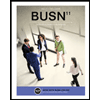
BUSN 11 Introduction to Business Student Edition
Business
ISBN:9781337407137
Author:Kelly
Publisher:Cengage Learning
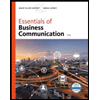
Essentials of Business Communication (MindTap Cou...
Business
ISBN:9781337386494
Author:Mary Ellen Guffey, Dana Loewy
Publisher:Cengage Learning
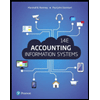
Accounting Information Systems (14th Edition)
Business
ISBN:9780134474021
Author:Marshall B. Romney, Paul J. Steinbart
Publisher:PEARSON
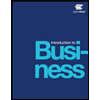
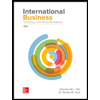
International Business: Competing in the Global M...
Business
ISBN:9781259929441
Author:Charles W. L. Hill Dr, G. Tomas M. Hult
Publisher:McGraw-Hill Education
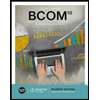
Related Questions
- During the COVID-19 pandemic, employees sometimes showed up at work when they had symptoms of illness because they were afraid of losing their jobs. This is an example of what behavior? Question 4 options: a) presenteeism b) poor work attitude c) absenteeism d) unscheduled absencearrow_forwardRead Article Selection Title of Article: “The Role of Fear and Greed in Consumer Behavior: A Meta-Analysis” Author(s): Corinne Low et al. Journal Name: Journal of Consumer Psychology Volume and year: Vol. 24, Issue 1, 2014 Pages: 50-64 Answer in details no short response What were the results of the study/studies reported in this article? What were the conclusions of the authors?arrow_forwardn 2006, Hewlett-Packard Development Company LP became embroiled in a controversy over methods used to investigate media leaks from its board. HP Chairperson Patricia Dunn could have simply asked the directors who was the source cited in the story, sought an apology and gone from there. With some direct face-to-face communication, the story would likely have ended quickly. It did not. “Not only did investigators impersonate board members, employees and journalists to obtain their phone records, but according to multiple reports, they also surveilled an HP director and a reporter for CNet Networks Inc. They sent monitoring spyware in an e-mail to that reporter by concocting a phoney tip. They even snooped on the phone records of former CEO and Chairperson Carly Fiorina, who had launched the quest to identify media sources in the first place.” The situation continued to escalate. For example, the New York Times reported that HP consultants even considered planting clerical or custodial…arrow_forward
- Choose 1 category of unethical behavior and give an actual example of each act in the category by doing a simple research. - Deceive - Hustle - Scam - Exaggerate - Withhold informationarrow_forward"TOXIC HISTORYHoaeb is among many former Rössing employees who complained about being exposed to radiation at the mine. The impact of mining operations on workers has haunted Rössing for decades. In 2015, the company commissioned a study through the University of Manchester to investigate if working at the Rössing mine is linked to a higher risk of developing cancer. At least 76 cases were detected. These include 32 cases of lung cancer, 18 other airway cancers, eight cases of leukaemia, nine cases of brain cancer and nine cases of kidney cancer. The study warned that employees may breathe in radioactive dust and radon gas, which can escape from the rock. The study was completed in 2019.Rio Tinto has since sold its 68% stake in the mine to Chinese state-owned China National Uranium Corporation Limited for N$1,5 billion.The study identified 7 901 people who had worked at least one year at the mine between 1976 and 2010. It concluded that workers may also have inhaled other…arrow_forward"TOXIC HISTORYHoaeb is among many former Rössing employees who complained about being exposed to radiation at the mine. The impact of mining operations on workers has haunted Rössing for decades. In 2015, the company commissioned a study through the University of Manchester to investigate if working at the Rössing mine is linked to a higher risk of developing cancer. At least 76 cases were detected. These include 32 cases of lung cancer, 18 other airway cancers, eight cases of leukaemia, nine cases of brain cancer and nine cases of kidney cancer. The study warned that employees may breathe in radioactive dust and radon gas, which can escape from the rock. The study was completed in 2019.Rio Tinto has since sold its 68% stake in the mine to Chinese state-owned China National Uranium Corporation Limited for N$1,5 billion.The study identified 7 901 people who had worked at least one year at the mine between 1976 and 2010. It concluded that workers may also have inhaled other…arrow_forward
- Abstract: The extract reports that in November 2017, the department of water affairs and sanitation revealed that36 mines operate without water licences, in violation of the National Water Act. They use water and wasteand pollute without being monitored by the department. In five case studies on mines ranging fromplatinum to coal by the Centre for Applied Legal Studies (at the University of the Witwatersrand in 2018found that very little of the social and labour plans mining companies signed up to were implemented.The study found that mining companies have spectacularly failed to build houses, provide childcare andbursaries as well as training. In most cases the companies also did not tell employees and local residentsabout their promised social and labour plan commitments. Qestion:Critically comment on the failure in social responsibility exhibited by these mining companies and itsimplicationsarrow_forwardCase StudyCyber bullying is a unique form of bullying that continues in spite of the dire consequences that can and do occur. Cyberbullying has gained significant media attention and countless incidents of bullying continue to occur. Although may cases are reported in the news, probably as many if not more go unreported. Bullying has been defined as something that one repeatedly does or says to gain power over another person. Unlike traditional bullying, cyberbullying eliminates the need for physical contact with others in order to make them feel inferior. Cyberbullying is “when a child, preteen or teen is tormented, threatened, harassed, humiliated, embarrassed or otherwise targeted by another child, preteen or teen using the Internet, interactive and digital technologies or mobile phones. Technology as an avenue for intimidation is a hot-button issue for school systems and parents alike. This is uncharted territory, and legislation does not always provide guidance and structure. The…arrow_forwardGive reaction on this incident. In 2009, four former employees of the company brought individual suit against Eli Lilly for marketing its anti-psychotic drug Zyprexa for uses not approved by the U.S. Food and Drug Administration. All four employees individually discovered discrepancies and unethical doings in the company and hired attorneys to bring charges against the company. The company was marketing its drug for unapproved use against dementia in the elderly, generalized sleep disorders and more. The company admitted to these illegal practices and settled a $1.4 billion lawsuit with the government. The whistleblowers in this case shared in 18 percent or $78 million dollars of the federal government’s part of the civil settlement.arrow_forward
- Your organization was able to win a client who is sponsoring an online concert whose mission is to support the advocacy of Violence against Women. The concert will have the performances of different groups and singers, all of which are females.question: As a professional who handles/manages an event, can your event attract the opposite sex as an audience? How?arrow_forwardBJ'S SUPERMARKET CUSTOMER CONFRONTATION: Recently, Jenna, Supervisor in the Customer Services department, witnessed a squabble between a customer and one of the customer service representatives Tina who is Caucasian American. The customer Maria who is of Latin American ancestry, was attempting to return what she claimed was a defective belt sander. Maria claimed the sander caused a serious abrasion to her husband's arm, resulting in a trip to the emergency room. Tina was rude to Maria in her response and not only refused to honor the return because she claimed it was beyond the 30 day 'no questions asked' return policy, but she suggested that Maria's husband had not followed the product directions appropriately. Tina went on to ask whether Maria's husband could read English. Maria angrily responded that although she and her husband are Latino, they are US citizens and fluent in English. When Jenna overheard the conversation she walked up to the returns counter and asked Tina to assist…arrow_forwardBACKGROUND THE EXECUTIVE DECISION Clark Faucet Company By 1999, Clark Faucet Company had grown into the thire largest supplier of faucets for both commercial and home use. Competition was fierce. Consumers would evaluate faucets on artistic design and quality. Each faucet had to be avail- able in at least twenty-five different colors. Commercial buyers seemed more in- terested in the cost than the average consumer, who viewed the faucet as an ob- ject of art, irrespective of price. The executive council mandated that another attempt to implement good project management practices must occur quickly. Project management would be needed not only for new product development but also for specialty products and enhancements. The vice presidents for marketing and engineering reluctantly agreed to try and patch up their differences, but did not appear confident that any changes would take place. Clark Faucet Company did not spend a great deal of money advertising on the radio or on television.…arrow_forward
arrow_back_ios
SEE MORE QUESTIONS
arrow_forward_ios
Recommended textbooks for you
 BUSN 11 Introduction to Business Student EditionBusinessISBN:9781337407137Author:KellyPublisher:Cengage Learning
BUSN 11 Introduction to Business Student EditionBusinessISBN:9781337407137Author:KellyPublisher:Cengage Learning Essentials of Business Communication (MindTap Cou...BusinessISBN:9781337386494Author:Mary Ellen Guffey, Dana LoewyPublisher:Cengage Learning
Essentials of Business Communication (MindTap Cou...BusinessISBN:9781337386494Author:Mary Ellen Guffey, Dana LoewyPublisher:Cengage Learning Accounting Information Systems (14th Edition)BusinessISBN:9780134474021Author:Marshall B. Romney, Paul J. SteinbartPublisher:PEARSON
Accounting Information Systems (14th Edition)BusinessISBN:9780134474021Author:Marshall B. Romney, Paul J. SteinbartPublisher:PEARSON
 International Business: Competing in the Global M...BusinessISBN:9781259929441Author:Charles W. L. Hill Dr, G. Tomas M. HultPublisher:McGraw-Hill Education
International Business: Competing in the Global M...BusinessISBN:9781259929441Author:Charles W. L. Hill Dr, G. Tomas M. HultPublisher:McGraw-Hill Education

BUSN 11 Introduction to Business Student Edition
Business
ISBN:9781337407137
Author:Kelly
Publisher:Cengage Learning

Essentials of Business Communication (MindTap Cou...
Business
ISBN:9781337386494
Author:Mary Ellen Guffey, Dana Loewy
Publisher:Cengage Learning

Accounting Information Systems (14th Edition)
Business
ISBN:9780134474021
Author:Marshall B. Romney, Paul J. Steinbart
Publisher:PEARSON


International Business: Competing in the Global M...
Business
ISBN:9781259929441
Author:Charles W. L. Hill Dr, G. Tomas M. Hult
Publisher:McGraw-Hill Education
